Along with a library and space for a future café, the Museum for Intercultural Dialogue is located in the House under Three Coats of Arms, or strictly speaking a complex of three tenement houses: the Tomkiewicz House built in the second half of the 18th century and two adjacent buildings, which gained their present shape as a result of reconstruction works in the 1940s.
The House itself played an important role in the history of the National Museum in Kielce. In 1945, the damaged Świętokrzyskie Museum restarted its operations in the building known as “Pod filarami” (Under the arcades) at what was then No. 3-4-5 Partyzantów Square. This is where the first post-war temporary exhibition was held in 1946 and a permanent exhibition was established the following year. Until 1971, when the National Museum took ownership of the Palace of the Kraków Bishops, the House served as its main seat. It housed the Regional Public Library until 2007. Currently, the building contains the museum library along with laboratories and other facilities used by the departments of Archaeology, Natural History and Folk Art. It was extended in 2012 to include the Museum for Intercultural Dialogue.
Visitors stepping over the threshold of the tenement house can find all the information they need to start their tour in the spacious lobby with a reception desk. Further into the building, on the ground floor, there is a library which stores nearly 50,000 books and offers free access to part of the collection. The upper floor houses the Museum for Cultural Dialogue with a cinema and conference room equipped with modern projection equipment, sound system and simultaneous interpreting system, as well as an educational room. The heart of the Museum for Cultural Dialogue is its exhibition rooms and exhibition corridor with a total floor space of nearly 160 sq. m. The Black Room houses the permanent exhibition and the White Room is used for temporary exhibitions. The former, dark and arranged as a maze, introduces visitors to the concept of intercultural dialogue and familiarizes them with other cultures, for example Roma, Jewish, Armenian and Muslim. The contrasting White Room is dedicated to the ongoing, multifaceted dialogue between nations, religions and ethnic groups, but also different styles in art and architecture.
| Day of the week | Opening hours | ||
|---|---|---|---|
| Monday | 08:00 - 16:00 | ||
| Tuesday | 08:00 - 16:00 | ||
| Wednesday | 08:00 - 16:00 | ||
| Thursday | 08:00 - 16:00 | ||
| Friday | 08:00 - 16:00 | ||
| Sunday | 09:00 - 17:00 | ||
| Holidays | Opening hours |
|---|---|
| 2025.05.01 (Thursday) | x |
| 2025.05.03 (Saturday) | x |
| 2025.11.01 (Saturday) | x |
| 2025.11.11 (Tuesday) | x |
| 2025.12.25 (Thursday) | x |
| 2025.12.26 (Friday) | x |
| Day of the week | Opening hours | ||
|---|---|---|---|
| Monday | 08:00 - 16:00 | ||
| Tuesday | 08:00 - 16:00 | ||
| Wednesday | 08:00 - 16:00 | ||
| Thursday | 08:00 - 16:00 | ||
| Friday | 08:00 - 16:00 | ||
| Sunday | 10:00 - 18:00 | ||
| Holidays | Opening hours |
|---|---|
| 2025.06.19 (Thursday) | x |
| 2025.08.15 (Friday) | x |
| Tickets | ||
|---|---|---|
| normal | 6.00 PLN | |
| reduced | 4.00 PLN | |
| group | 5.00 PLN | |
| when? | name | where? | about what? | for free | for children | |
|---|---|---|---|---|---|---|
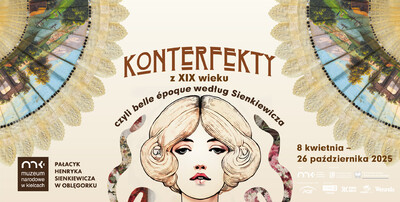 | 2025.04.08-2025.10.26 | "Konterfekty z XIX wieku, czyli belle époque według Sienkiewicza Temporary exhibition | The Museum of Henryk Sienkiewicz in Oblęgorek ul. Aleja Lipowa 24 26-067 Strawczyn Holy Cross | literature, outfits, painting, utility items | ||
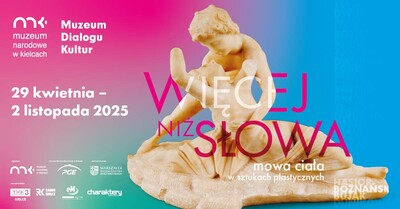 | 2025.04.29-2025.11.02 | Więcej niż słowa. Mowa ciała w sztukach plastycznych Temporary exhibition | The Museum for Intercultural Dialogue ul. Rynek 3 25-303 Kielce Holy Cross | graphics and drawing, painting, sculpture | ||
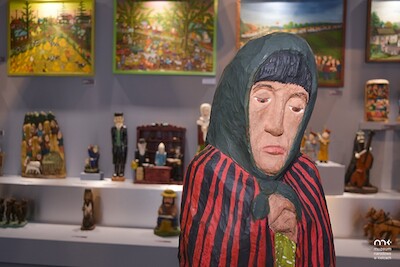 | FROM THE SACRED TO THE PROFANE: Sculpture and painting in folk art Permanent exhibition | The Museum for Intercultural Dialogue ul. Rynek 3 25-303 Kielce Holy Cross | folk art, painting, sacrum, sculpture | |||
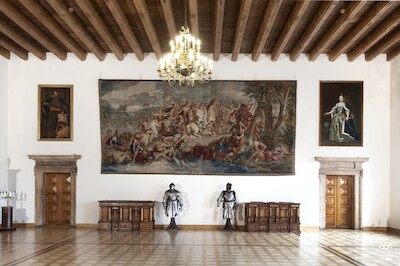 | Historical interiors - 17th and 18th c. Permanent exhibition | Former Palace of Cracow Bishop pl. Zamkowy 1 25-010 Kielce Holy Cross | art, art crafts, fabrics, interiors and everyday life, weapons and militaria | |||
| History of Motorisation in Miniature Permanent exhibition | The Museum for Intercultural Dialogue ul. Rynek 3 25-303 Kielce Holy Cross | automotive, models | ||||
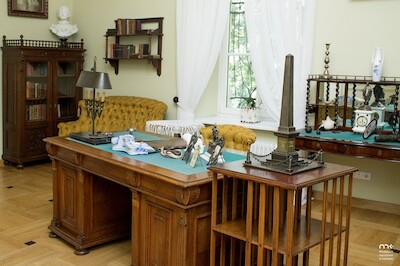 | Permanent exhibition Permanent exhibition | The Museum of Henryk Sienkiewicz in Oblęgorek ul. Aleja Lipowa 24 26-067 Strawczyn Holy Cross | art crafts, artists, interiors and everyday life, literature, utility items | |||
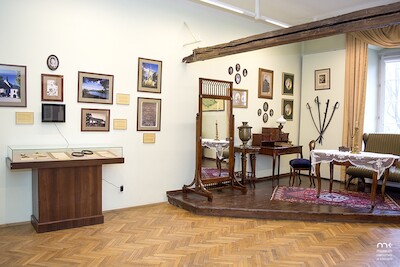 | Permanent exhibition Permanent exhibition | Muzeum Stefana Żeromskiego ul. Jana Pawła II 5 25-013 Kielce Holy Cross | artists, interiors and everyday life | |||
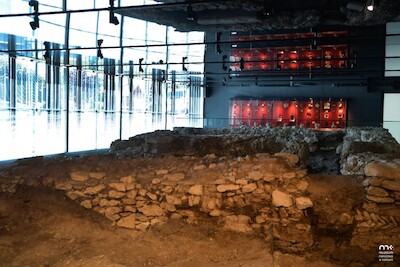 | Permanent exhibition Permanent exhibition | The Museum of Archeology in Wislica pl. Solny 35 28-160 Wiślica Holy Cross | archeology, architecture, numismatic items, utility items | yes | ||
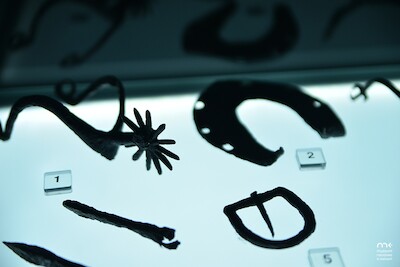 | Prehistory and early Middle Ages of Ponidzie and Wiślica Permanent exhibition | The Museum for Intercultural Dialogue ul. Rynek 3 25-303 Kielce Holy Cross | archeology, collections, region, utility items, weapons and militaria | |||
 | The diversity triangle Permanent exhibition | The Museum for Intercultural Dialogue ul. Rynek 3 25-303 Kielce Holy Cross | anthropology, region, religions | |||
| The Gallery of Polish Painting and Decoration Art Permanent exhibition | Former Palace of Cracow Bishop pl. Zamkowy 1 25-010 Kielce Holy Cross | art crafts, painting | ||||
 | The Numismatic collection Permanent exhibition | Former Palace of Cracow Bishop pl. Zamkowy 1 25-010 Kielce Holy Cross | archeology, numismatic items | |||
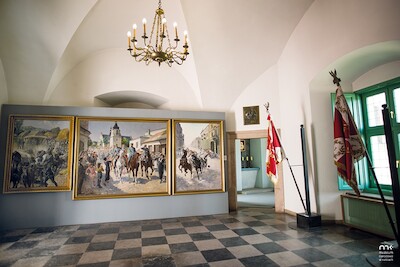 | The Sanctuary of Marshal Joseph Pilsudski Permanent exhibition | Former Palace of Cracow Bishop pl. Zamkowy 1 25-010 Kielce Holy Cross | army, characters |